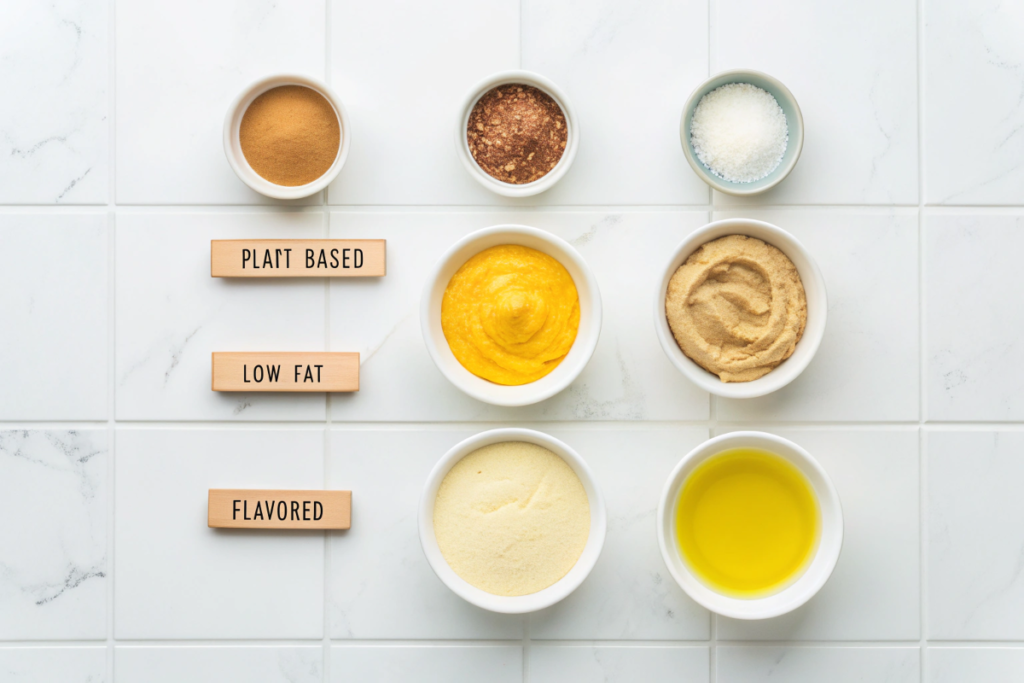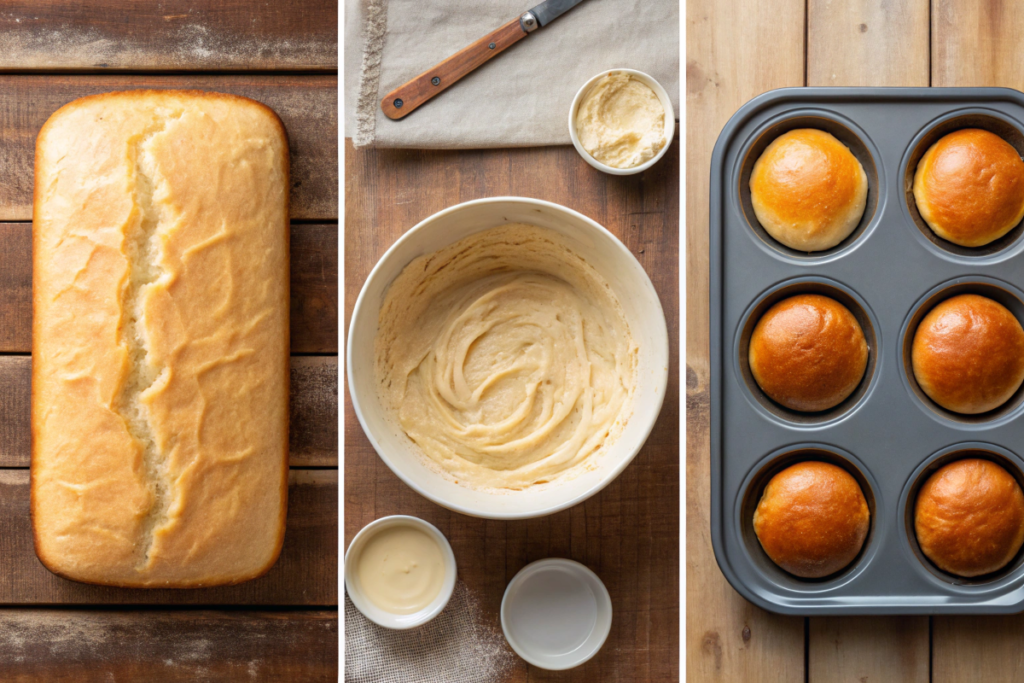Baking spread plays a crucial role in English kitchens by offering a versatile alternative to traditional butter. But what exactly is baking spread in England?
This comprehensive guide covers everything you need to know about baking spreads, including their definitions, history, various types, and uses in British baking. Whether you’re a seasoned baker or just starting, gaining a deeper understanding of baking spread can elevate your culinary creations. If you’re exploring plant-based options, check out Are Pretzels Vegan? for more insights.
Furthermore, we’ll explore the ingredients used in baking spreads, their nutritional value, and the popular brands available in the UK. You’ll also discover tips on selecting the right baking spread for your needs and storing it properly. By the end of this guide, you’ll have a thorough understanding of baking spread and its significance in English baking.
Introduction to Baking Spread
Defining Baking Spread
Baking spread, often mistaken for margarine, is a type of fat used in cooking and baking. In England, baking spread has a specific formulation tailored to suit British tastes and baking practices. Unlike traditional butter, it typically contains vegetable oils, making it a plant-based alternative. This characteristic makes it ideal for those aiming to reduce dairy intake or follow a vegan diet.
Why is Baking Spread Popular in England?
Several factors contribute to the rising popularity of baking spread in England. Its versatility and ease of use stand out, as it spreads smoothly even when cold—perfect for baking pastries and cakes.
Additionally, baking spread is available in various flavors and formulations, catering to different dietary preferences and health considerations.
Baking Spread vs. Traditional Butter: Key Differences
Understanding the distinctions between baking spread and traditional butter is essential for any baker. Baking spread usually contains less saturated fat and cholesterol compared to butter, making it a healthier option.
Moreover, it boasts a longer shelf life and is more affordable, offering a practical choice for everyday baking needs.
History of Baking Spread in England
Origins and Evolution of Baking Spread
The history of baking spread in England dates back to the early 20th century when margarine was introduced as a cheaper alternative to butter.
Over the years, baking spread has evolved by incorporating various vegetable oils and additives to enhance taste and texture. This evolution has established baking spread as a staple in British households.
Introduction of Margarine and Its Impact
The introduction of margarine significantly influenced English baking practices. Due to its affordability and versatility, margarine gained widespread acceptance.
Eventually, baking spread emerged as a refined version of margarine, specifically designed for baking with improved flavor profiles and better performance in recipes.
Modern Uses and Trends in Baking Spread
Today, baking spread continues to adapt to modern dietary trends and health-conscious consumers. The market now features plant-based and low-fat options, catering to vegan diets and those seeking to reduce calorie intake.
Additionally, there is a growing demand for organic and non-GMO baking spreads, reflecting a broader shift towards healthier eating habits.
Types of Baking Spread Available in England
Plant-Based Baking Spreads
Plant-based baking spreads are increasingly popular in the UK, appealing to vegans and individuals with lactose intolerance. These spreads are made from various vegetable oils, such as sunflower, canola, and olive oil, providing a dairy-free alternative without compromising taste or functionality in baking.
Low-Fat and Reduced-Calorie Options
Health-conscious consumers often prefer low-fat and reduced-calorie baking spreads. These options typically contain fewer calories and less fat than regular baking spreads, making them suitable for those managing their weight without sacrificing their baking needs.
Baking Spread with Added Flavors (e.g., Salted or Unsalted)
Baking spreads come in different flavors to suit various culinary applications. Options like salted or unsalted versions offer flexibility for both sweet and savory recipes. Salted baking spread adds a subtle salty flavor, ideal for pastries and bread, while unsalted versions are perfect for delicate baking tasks requiring precise salt control.
Ingredients in Baking Spread
Main Ingredients
The primary ingredients in baking spread include vegetable oils, water, salt, and emulsifiers. These components are carefully selected to ensure a smooth texture and optimal performance in baking. Common oils used are palm, soybean, and sunflower oil, which provide the necessary fat content for baking.
Differences in Ingredients Between Brands
Different brands may use varying ingredients to cater to specific tastes and dietary requirements. Some UK baking spreads are fortified with vitamins like A and D, while others focus on using non-GMO or organic oils. Understanding these differences can help you choose the best baking spread for your needs.
Are Baking Spreads Healthier Than Butter?
Baking spreads are often considered a healthier alternative to butter. They typically contain less saturated fat and cholesterol, making them a better choice for heart health. Additionally, the use of vegetable oils in baking spreads provides essential fatty acids beneficial for overall health.

Uses of Baking Spread in Cooking and Baking
Baking Cakes and Pastries with Baking Spread
Baking spread is a favorite ingredient for making cakes and pastries. It ensures that baked goods remain moist and tender by providing the necessary fat content for a rich texture. This enhances the flavor of sweet treats like cakes, cookies, and scones.
Using Baking Spread for Frying and Sautéing
Beyond baking, baking spread is also ideal for frying and sautéing. It allows for even heat distribution, preventing food from sticking to the pan. Its high smoke point makes it suitable for cooking at various temperatures without burning.
Substituting Butter with Baking Spread in Recipes
Baking spread serves as an excellent substitute for butter in many recipes. This substitution can lower the saturated fat content while maintaining the desired texture and flavor. It’s particularly useful in recipes where fat plays a crucial role, such as in pie crusts and muffin batters.

Benefits of Using Baking Spread
Cost-Effective Alternative to Butter
One of the main advantages of baking spread is its cost-effectiveness. It makes baking more affordable, especially for large batches or frequent use. This economic benefit is a significant reason why many households prefer baking spread over butter.
Easy to Spread Even When Cold
Baking spread remains soft and spreadable even when refrigerated. This feature is convenient for preparing toppings, spreads, and frostings without needing additional heating. It’s particularly beneficial for quick baking tasks and meal preparations.
Suitable for Vegan and Dairy-Free Diets
Baking spread caters to a wide range of dietary needs. Since it’s typically made from plant-based oils and contains no animal products, it is suitable for vegan and dairy-free diets. This inclusivity makes baking spread an essential ingredient for those adhering to specific dietary restrictions.
Nutritional Value of Baking Spread
Calorie and Fat Content
Understanding the nutritional content of baking spread is important for maintaining a balanced diet. The calorie and fat content can vary depending on the brand and formulation. Generally, baking spreads contain around 80-90 calories per tablespoon, with a mix of saturated and unsaturated fats.
Vitamins and Nutritional Additives
Many baking spreads are fortified with essential vitamins and nutrients. Vitamins and nutritional additives such as vitamins A and D are commonly added to enhance their nutritional profile. These vitamins are crucial for maintaining healthy vision, skin, and bone health.
Comparing Nutritional Profiles of Popular Brands
Comparing the nutritional profiles of different baking spread brands can help you make informed choices. Popular brands may vary in calorie content, types of fats, and added vitamins. Consider these factors based on your health goals and dietary needs.
Popular Brands of Baking Spread in England
Stork Baking Spread
Stork is one of the most recognized baking spread brands in England. Known for its consistent quality and versatility, Stork offers both salted and unsalted versions to cater to different recipe requirements.
Flora and Other Common Brands
Flora is another popular brand that provides a range of baking spreads. Along with other common brands, Flora offers options that include plant-based and low-fat formulations. These spreads are favored for their taste and performance in both sweet and savory dishes.
Local and Artisan Baking Spreads
In addition to major brands, local and artisan baking spreads are gaining popularity. These spreads often use high-quality, organic ingredients and offer unique flavors. They appeal to consumers seeking premium options and those who support local businesses.
How to Choose the Right Baking Spread
Selecting Based on Recipe Requirements
Choosing the right baking spread depends on the specific recipe. Consider factors like flavor, fat content, and spreadability when selecting a spread. For delicate pastries, an unsalted baking spread is preferred, while a salted version can enhance savory dishes.
Tips for Choosing Healthier Options
If you’re seeking healthier alternatives, opt for baking spreads with lower saturated fat and no trans fats. Reading labels carefully, choosing spreads with vegetable oils, and avoiding unwanted additives can help you make healthier choices.
Evaluating Price vs. Quality
Balancing price and quality is key when selecting a baking spread. Ensure you get the best value for your money without compromising the performance and taste of your baked goods. Higher-priced spreads may offer better ingredients and superior quality.
Storage Tips for Baking Spread
Refrigeration and Shelf Life
Proper storage of baking spread ensures its longevity and maintains quality. Keep baking spread in a cool, dry place, preferably in the refrigerator, to extend its shelf life and prevent it from going rancid.
Freezing Baking Spread for Longer Storage
For extended storage, baking spread can be frozen without compromising its quality. Wrap it tightly to prevent freezer burn. This method is ideal for those who buy baking spread in bulk and want to preserve it for future use.
Recognizing Signs of Spoilage
Knowing how to identify spoiled baking spread is important for food safety. Look for unusual odors, discoloration, and changes in texture. If the spread smells off or shows signs of mold, discard it immediately.
Frequently Asked Questions Baking Spread in England
Can Baking Spread Be Used in Place of Butter?
Yes, baking spread can replace butter in most recipes. It works well in baking cakes, pastries, and even savory dishes like sautéed vegetables and meats. The texture and flavor are comparable, making it a versatile alternative.
Is Baking Spread Gluten-Free?
Most baking spreads are gluten-free, but it’s essential to check the label. Ensure there are no added ingredients that contain gluten. Many brands offer gluten-free options, making baking spread suitable for those with gluten sensitivities or celiac disease.
Does Baking Spread Contain Trans Fats?
While some baking spreads may contain trans fats, many brands have reformulated their products to be trans fat-free. Always read the nutritional information and ingredient list to confirm. Opt for spreads labeled as trans fat-free for a healthier choice.
Conclusion
Baking spread remains a kitchen staple in England due to its versatility and cost-effectiveness. Its ability to adapt to various cooking and baking needs provides a reliable alternative to butter that meets modern dietary preferences. Whether you’re baking a simple cake or preparing a gourmet meal, baking spread offers the flexibility and performance that English kitchens rely on.

